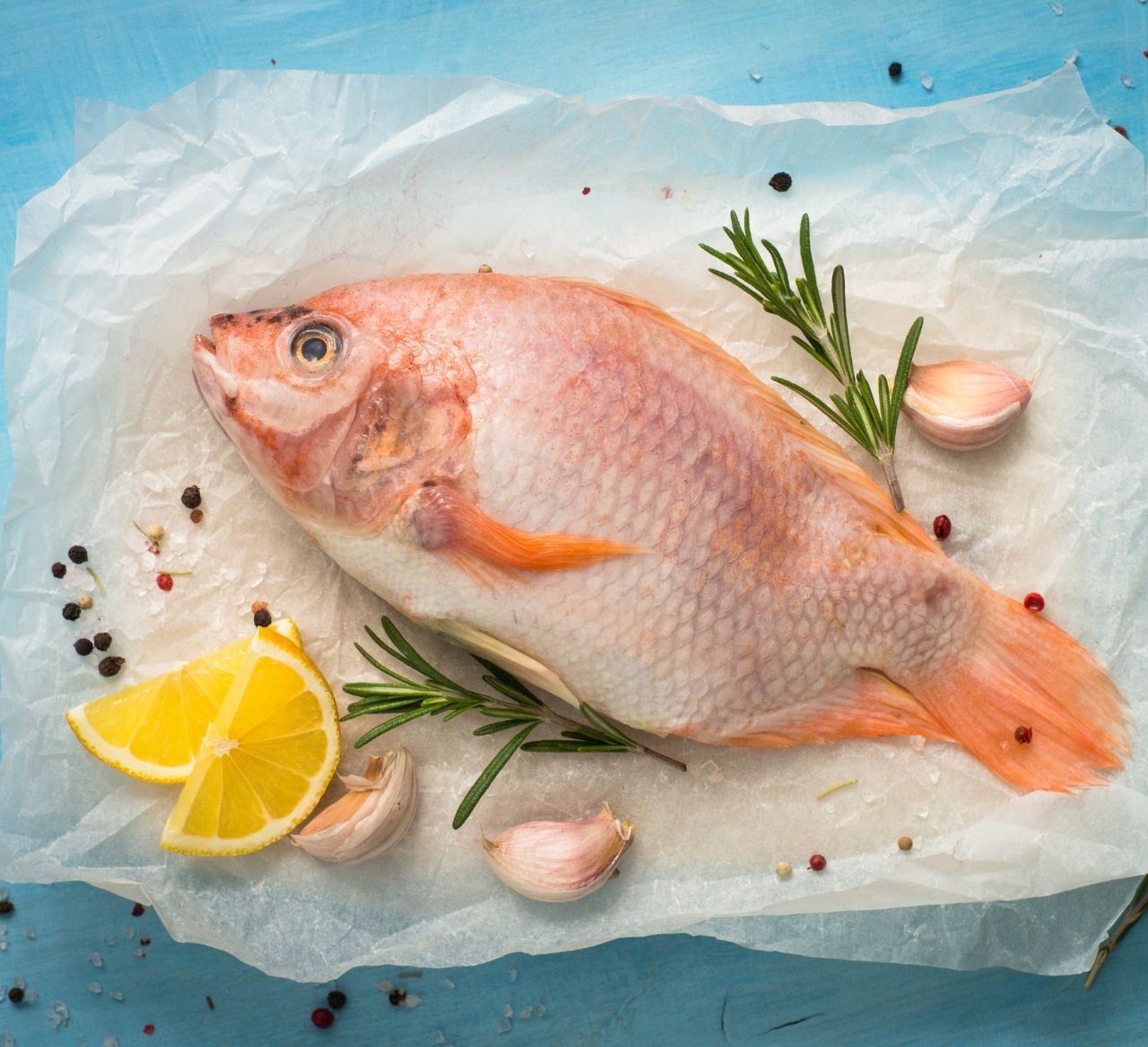Our
products
Our
products
Tilapia
Our Tilapia come from our own hatchery and grow in large natural saltwater tanks. We feed the fish, which we keep in a natural stocking density, with high-protein plant and algae from our own production.
The tilapia stands apart through its tender but firm meat and its versatility in cooking. With its mild taste, it pairs well with many ingredients. It contains few calories, hardly any fat and a lot of protein.
The tilapia is one of the best-selling fish in North America. Due to its increasing popularity, it can also be found in the fish aisle of well-stocked German supermarkets.

Tilapia
Our Tilapia come from our own hatchery and grow in large natural saltwater tanks. We feed the fish, which we keep in a natural stocking density, with high-protein plant and algae from our own production.
The tilapia stands apart through its tender but firm meat and its versatility in cooking. With its mild taste, it pairs well with many ingredients. It contains few calories, hardly any fat and a lot of protein.
The tilapia is one of the best-selling fish in North America. Due to its increasing popularity, it can also be found in the fish aisle of well-stocked German supermarkets.


Salicornia
Salicornia (also known as sea asparagus or samphire) is a plant that grows on naturally saline desert soil and uses salt water from the sea. It has a high protein content and, as a halophyte (salt-tolerant) plant, it is one of the foods of the future whose demand exceeds its availability.
Salicornia convinces with its salty taste, which becomes even more pronounced when fried. It contains little fat and a high percentage of calcium. It also has a high iodine content and is an excellent side dish for tilapia. The cultivation of salicornia uses coastal and desert areas where conventional plants cannot be grown.Salicornia
Salicornia (also known as sea asparagus or samphire) is a plant that grows on naturally saline desert soil and uses salt water from the sea. It has a high protein content and, as a halophyte (salt-tolerant) plant, it is one of the foods of the future whose demand exceeds its availability.
Salicornia convinces with its salty taste, which becomes even more pronounced when fried. It contains little fat and a high percentage of calcium. It also has a high iodine content and is an excellent side dish for tilapia. The cultivation of salicornia uses coastal and desert areas where conventional plants cannot be grown.
Salicornia
Salicornia (also known as sea asparagus or samphire) is a plant that grows on naturally saline desert soil and uses salt water from the sea. It has a high protein content and, as a halophyte (salt-tolerant) plant, it is one of the foods of the future whose demand exceeds its availability.
Salicornia convinces with its salty taste, which becomes even more pronounced when fried. It contains little fat and a high percentage of calcium. It also has a high iodine content and is an excellent side dish for tilapia. The cultivation of salicornia uses coastal and desert areas where conventional plants cannot be grown.
Spirulina & Chlorella
algae
We produce algae in premium quality: rich in vitamins, proteins and trace elements. Our algae support the immune system and aid vitality in a natural way. The quality of our production manufacturing process and products is continuously monitored.
As part of our research, we test different varieties of algae and their processing into the final product. We incorporate the idea of algae as a superfood, which was already used by the Aztecs as part of their diet.

Spirulina & Chlorella
algae
We produce algae in premium quality: rich in vitamins, proteins and trace elements. Our algae support the immune system and aid vitality in a natural way. The quality of our production manufacturing process and products is continuously monitored.
As part of our research, we test different varieties of algae and their processing into the final product. We incorporate the idea of algae as a superfood, which was already used by the Aztecs as part of their diet.











